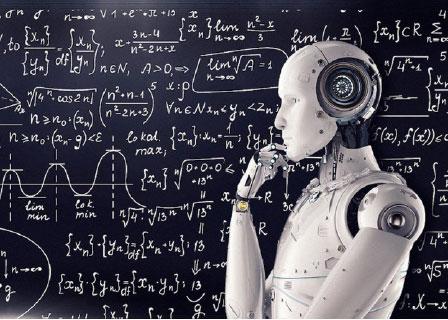You are here
Artificial Intelligence – the new season is out
By Jean-Claude Elias - Dec 03,2020 - Last updated at Dec 03,2020

Photo courtesy of wearethemighty.com
Artificial Intelligence (AI) is changing computers from calculators to thinking, decision-making systems.
After years of being a more or less theoretical topic, AI has become reality. Forget about Steven Spielberg’s “A.I. Artificial Intelligence” movie from 2001 that was merely entertainment, though with valid examples and illustrations of AI. The technology now is very much in self-driving vehicles, in the analysis of our online shopping and browsing habits on social media, and of course in advanced banking applications, to name only a few. Indeed, the sky is the limit when it comes to AI.
I still keep a copy of the excellent “Artificial Intelligence” textbook by Elaine Rich from the University of Texas in Austin, that got me to start reading and learning about the subject years ago. As enlightening, good, accurate, and genuinely scientific as it was back then, it seems like it was written centuries ago, given all the concrete progress achieved since!
There are a few, notable landmarks along the fascinating journey with computers and digital high-technology that started in the late 1940s.
The first was the personal computers revolution of the 1980s. Then came the Internet (cabled and slow at the beginning), almost in parallel with the early portable computers that had little to do with the current crop of laptops in terms of processing power, storage capability and weight. Today wireless, fast Internet, with powerful and truly portable devices, combined with the IoT (Internet of Things), and social media, constitute the most recent, most significant landmark on the digital timeline. By any measure, AI is the next big thing, one that is already upon us.
AI is more about software than it is about hardware, though it is common today to talk about “AI chips”. It simply means that the circuitry is hard-programmed with AI algorithms, Whereas traditional programming processes data and generates reports, in a rather straightforward manner, to put is simply, AI can go further by analysing data – huge amounts of it — more deeply, in a more “intelligent” way, and come up with decisions or suggestions, somewhat like a human being would – hence the expression.
Tesla electric cars constitute a good example of AI applications. As explained on analyticssteps.com: “The Tesla system consists of two AI chips in order to support it for better road performance. Each of the AI chips makes a separate assessment of the traffic situation for guiding the car accordingly.”
In banking, “AI solutions are helping banks and credit lenders make smarter underwriting decisions by utilising a variety of factors that more accurately assess traditionally underserved borrowers, like millennials, in the credit decision making process.” (builtin.com/artificial-intelligence).
Just like old, traditional computing systems did, AI is now is raising a few questions, on the social side of things. The main one being, of course: “To what extent will AI replace human work and negatively impact on unemployment?”
Instead of trying desperately to answer this otherwise perfectly legitimate and justified question, one can be more pragmatic and think of all that AI can bring. If there is only one major advantage that AI will bring when it comes to smart self-driving cars, it will be a significant drop in road accidents and casualties. This alone is a priceless plus.
Related Articles
DETROIT — Self-driving cars could hit roads within five years, the head of Fiat Chrysler Automobiles said recently, days after the company a
SAN FRANCISCO — Google parent Alphabet on Tuesday announced that it has partnered with Fiat Chrysler in a major expansion of its fleet
AMMAN — Jordan is making “remarkable” progress in bolstering its investment and innovation in the field of Artificial Intelligence (AI)The J


















